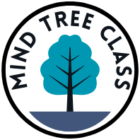What is a hands-on reading approach?
Kids who are Struggling to read are a usual scene in almost every classroom.
More activity-based reading methods should be used in the classroom.
Hands-on activities Are one such example.
What are hands-on activities?
Hands-on activities, in general, means learning by experience. Children might not have, an interest in learning by sitting in a classroom.
The first step in the learning process is to generate interest. Hands-on activities can be used to develop an interest in learning.
Advantages of Hands-on activities
Learning by doing through multisensory, hands-on instruction allows students to be natural learners.Hands-on activities also allow teachers to break down content into small segments. It will help struggling readers.
Hands-on activities incorporate movement and help in motor skill development.
Motor skills have a positive relationship between cognitive development and student achievement.
Seven hands-on activities
Here we are discussing the Seven hands activities suggested by Murray, Elise, and Murray, Stacey (2022) (7 Hands-on Strategies for Struggling Readers’ Kentucky Teacher Education Journal.)
Build the words
The ‘build the words’ method Focuses on fine motor skills. It gives physical and visual experiences to children.
We can use magnetic letters, letter blocks, Play-Doh, or wired letters.
Feel the Words
This method Encourages students to use their hands to feel the words.It strengthens fine motor skills and engages children in letter identification and writing.
It helps in increasing muscle memory and site recognition.
Using individual fingers or a whole hand to write letters and words on different smooth objects is highly engaging for students. Writing by hand makes them more attached to letters and words.
Whole Body Letters
Physical activities keep students engaged. Using kinetic activities within the classroom increases blood flow to the brain. Which increases brain activity.
In This, the students physically make the letter with their bodies. It’s a fun exercise for students.
Five Finger Retell
Difficulties in Retelling are a sign of weakness in reading.
This strategy teaches the students to name the five elements of a story by using their hands as a visual. The students describe the setting, characters, problems, and events with help of their fingers.
Sight Word BINGO
Sight word recognition is the first step in the reading process.
Sight word BINGO using daubers is a hands-on, engaging activity to help students fluently recall sight words. It also promotes fine motor development and can build hand-eye coordination.
Sound boxes
sound boxes are a hands-on approach that promotes reading achievement by teaching students to segment words by sounds.
The teacher will say a word aloud; the students will listen for the sounds in the word, while moving a token into a box for each sound the students hear. Having boxes or squares available for students to place tokens will help visually support students as they segment the word.
Word Swat
This game can be played, with two to four players. An assortment of cards with
3 to 4-letter words are displayed in front of the students on a table or taped to the wall. Every student gets a fly swatter and is instructed to swat a word based on a vowel sound provided by the teacher. For example, the teacher may say “find the word with the long a sound”. And the students will have to act quickly to swat the word containing the long a sound.
This activity promotes active participation and incorporates gross motor movement.
A hands-on approach to reading is very effective, hence we should include more of this in our classrooms.


